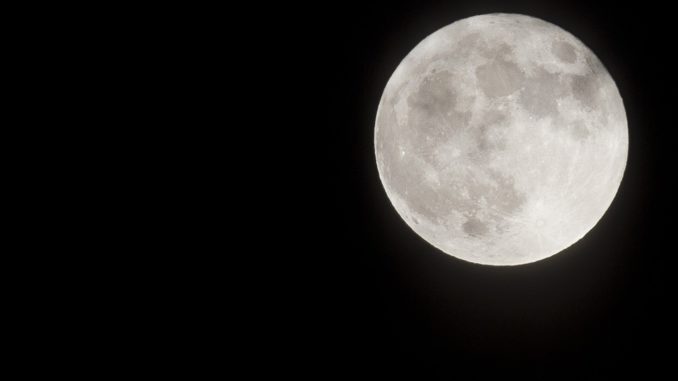
July’s Black Moon
Contributed By Daryl Lovell
Media Relations Manager
Division of Marketing and Communications
T 315.443.1184 M 315.380.0206
[email protected] | @DarylLovell
For those looking up at the sky tonight in North America, you may notice something missing–the moon! That’s because July 31 marks a lunar event called the “black moon” which is the second new moon that happens in one calendar month. A new moon is the phase of the moon where it’s invisible, with the lit portion of the moon facing away from us.
Walter Freeman is an assistant teaching professor in the physics department at Syracuse University’s College of Arts and Sciences. He says astronomy events like the black moon captures people’s attention because it is a kind of bridge between two of the greatest accomplishments of humanity: fiction and mythology, and science.
Professor Freeman answers five questions about the July 31 “black moon:”
-
What is a “black moon” and can you explain the science behind it?
“A ‘black moon’ is just a second new moon that happens in one calendar month. This is no different than any other new moon from the perspective of science. When the Moon is on the same side of Earth as the Sun, then the face of the Moon that gets sunlight is pointed away from us, and we can’t see it; the face of the Moon that’s pointed toward us is in shadow, so we can’t see it. This is a ‘new moon’, and it happens once every 29.5 days. Our months are a little bit longer than this, so sometimes we get two of these per calendar month. This happens because the designers of the Gregorian calendar that we use wanted every year to be the same length, and have “stretched” the months to be a little bit longer than 29.5 days so that twelve months add up exactly to one year. So, if a new moon happens near the beginning of a calendar month, then the next one will happen before it’s over. There’s no science here; it’s just an artifact of how we keep time.”
2. How does it differ from other lunar events, such as a super wolf blood moon?
“A ‘blood moon’ is actually something astronomically interesting: a lunar eclipse, where the Earth’s shadow falls on the Moon. The term ‘blood moon’ comes from the fact that red light from the Sun leaks around the edges of the Earth even during a lunar eclipse.”
3. How do you see it?
“There’s nothing to see! A new moon is the phase of the Moon where it’s invisible since the lit part is facing away from us.
“However, the fact that you can’t see the Moon allows you to see the stars, planets, and the Milky Way better. When the Moon is above the horizon, the moonlight drowns out all but the brightest stars and planets. When the Moon is close to new, it’s also mostly below the horizon during the night. So this time of the month where the Moon is nearly new is a great time to go observe all the other stuff in the night sky.
“In particular, we have a very good view of Jupiter right now in the southern sky, visible after dark. If you look at Jupiter with binoculars, a small telescope, or a large telephoto lens, you can see Jupiter’s four largest moons; these are the same ones that Galileo saw four hundred years ago that convinced him that the Sun, not the Earth, was at the center of the solar system.”
4. Is this lunar event rare?
“A new moon happens every 29.5 days, so — astronomically speaking — this is a pretty common occurrence! Two new moons will happen in one month whenever the first new moon falls in the first day and a half of a 31-day month; this will happen every year or two.”
5. Why do you think these types of lunar events capture the attention of so many people?
“Astronomical events capture the attention of people because we’ve always told stories and made myths about the things in the night sky. The bright red planet is named after blood-red Mars, the god of war. We named the beautiful planet visible in the morning and evening after Venus, the Roman goddess of beauty. Now we know more, of course: Mars is reddish because its surface contains rust, and Venus is actually a sulfurous hellscape hot enough to melt lead thanks to a runaway greenhouse effect. But knowing what the planets and stars really are, and how they work, doesn’t mean that we can’t also think of the myths.
“So, I think astronomy captures people’s attention because it is a kind of bridge between two of the greatest accomplishments of humanity: fiction and mythology, and science.”
Support Northern Colorado Journalism
Show your support for North Forty News by helping us produce more content. It's a kind and simple gesture that will help us continue to bring more content to you.
BONUS - Donors get a link in their receipt to sign up for our once-per-week instant text messaging alert. Get your e-copy of North Forty News the moment it is released!
Click to Donate
